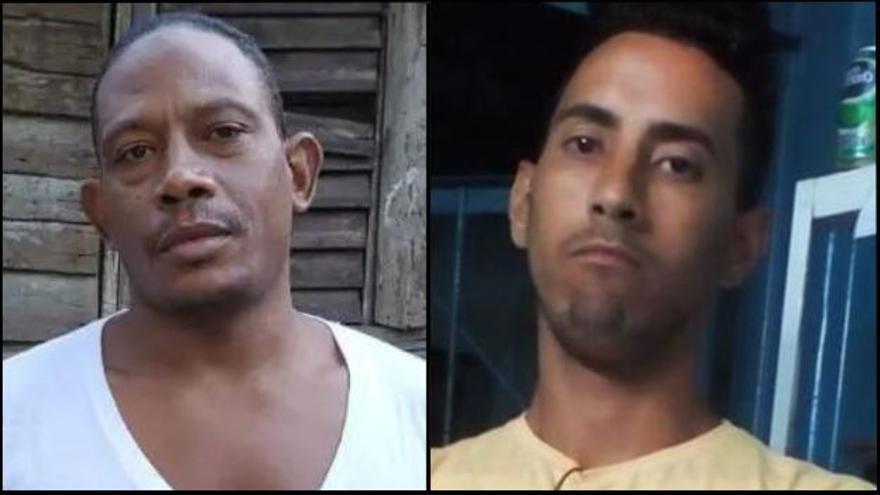
![]() 14ymedio, Madrid, November 3, 2023 — The Provincial Court of Havana tried three Cubans this Thursday for crimes against State Security, which the Prosecutor’s Office asks to be punished with a total of 30 years in prison between them. Half of those years, for Jorge Luis Boada Valdés, 27 years old; to which is added the cases of Luis Andrés Domínguez Sardiñas, 47 – whose legal process has been known for months – and Yohan Carlos Terán Izquierdo, age 25.
14ymedio, Madrid, November 3, 2023 — The Provincial Court of Havana tried three Cubans this Thursday for crimes against State Security, which the Prosecutor’s Office asks to be punished with a total of 30 years in prison between them. Half of those years, for Jorge Luis Boada Valdés, 27 years old; to which is added the cases of Luis Andrés Domínguez Sardiñas, 47 – whose legal process has been known for months – and Yohan Carlos Terán Izquierdo, age 25.
According to the EFE agency, which had access to the document that the Prosecutor’s Office presented to the court, the respective sentences requested for Boada, Terán and Domínguez, are 15, 12 and 3 years, for the crimes of enemy propaganda and acts against the Security of the State. The sentences are expected to be known within 20 days.
Boada was arrested on February 25 after receiving a summons for writing signs with the slogan “Díaz-Canel, singao” [motherfucker] on three occasions in the Havana neighborhood of Lawton. According to the Spanish agency, the young man’s family has argued that he does not have “the mental capacity” to understand the acts he committed, in addition to the fact that he has suffered from epileptic seizures since he was a child, depends on constant medication, and was in a “special school.” His cognitive state, they say, makes him easily influenced.
The psychiatric examination carried out on the young man by the authorities indicated that he has criminal responsibility and he was denied a second analysis
However, the psychiatric examination carried out on the young man by the authorities indicated that he has criminal responsibility and he was denied a second medical analysis. Boada’s family has described to the independent press the harassment he suffers in prison – after being prohibited from awaiting trial in freedom – where he has continued to paint posters against the regime.
In a similar situation is Domínguez, imprisoned since February 2022, accused of crimes that include throwing stones at a store that takes payment only freely convertible currency (MLC), calling for demonstrations on social networks, and conspiring with people abroad.
The Prosecutor’s Office alleges that Domínguez intended to create “an environment of destabilization of the internal order and security of the country,” calling for popular protests after the demonstrations of 11 July 2021, commonly referred to as ’11J’. In addition, prosecutor Yanaisa Matos Legrá highlights, two “counterrevolutionary influencers”: residents abroad who promised – presumably to Boada and Domínguez – to send them “elastic bands” to make stone throwers, “alcohol to make incendiary devices,” spray to paint posters and carry out other “actions of civil disobedience.”
“However, the Prosecutor’s Office document does not indicate whether these transfers of money and material were made,” EFE concludes.
Domínguez, who belongs to the Orlando Zapata Tamayo Civic Action Front of Havana, has been imprisoned on several occasions
Domínguez, who belongs to the Orlando Zapata Tamayo Civic Action Front of Havana, has been imprisoned on several occasions for alleged non-payment of fines.
As for Terán, about whom fewer details have been revealed although the possibility of spending 12 years in prison weighs on him, his only known actions are calling on the population to protest after ’11J’ and making a direct transmission on his social networks while he wrote with a crayon, in the Lawton neighborhood, “Down with the dictatorship.” It has also been shown that he has friendly ties with Boada.
The holding of this cause brings to mind another case, that of Yasmany González Valdés, imprisoned since April in the Combinado del Este prison after counterintelligence assigned to him the authorship of the anti-government graffiti shared on social networks by a self-determined group, El Nuevo Directorio [The New Directory], from which there has been no further news.
The authorities have not commented on a possible trial of González, although the prosecutor’s sentencing request is six years, for authorship of the posters, which appeared on Humboldt Street, the Faculty of Physics of the University of Havana and in the university stadium.
Several posts on social networks by residents of the capital claim that during the trial several neighborhoods in Havana were militarized to prevent popular protests, including Santos Suárez and La Víbora. In addition to these, others like Luyanó had cuts in communications and internet service.
____________
COLLABORATE WITH OUR WORK: The 14ymedio team is committed to practicing serious journalism that reflects Cuba’s reality in all its depth. Thank you for joining us on this long journey. We invite you to continue supporting us by becoming a member of 14ymedio now. Together we can continue transforming journalism in Cuba.
